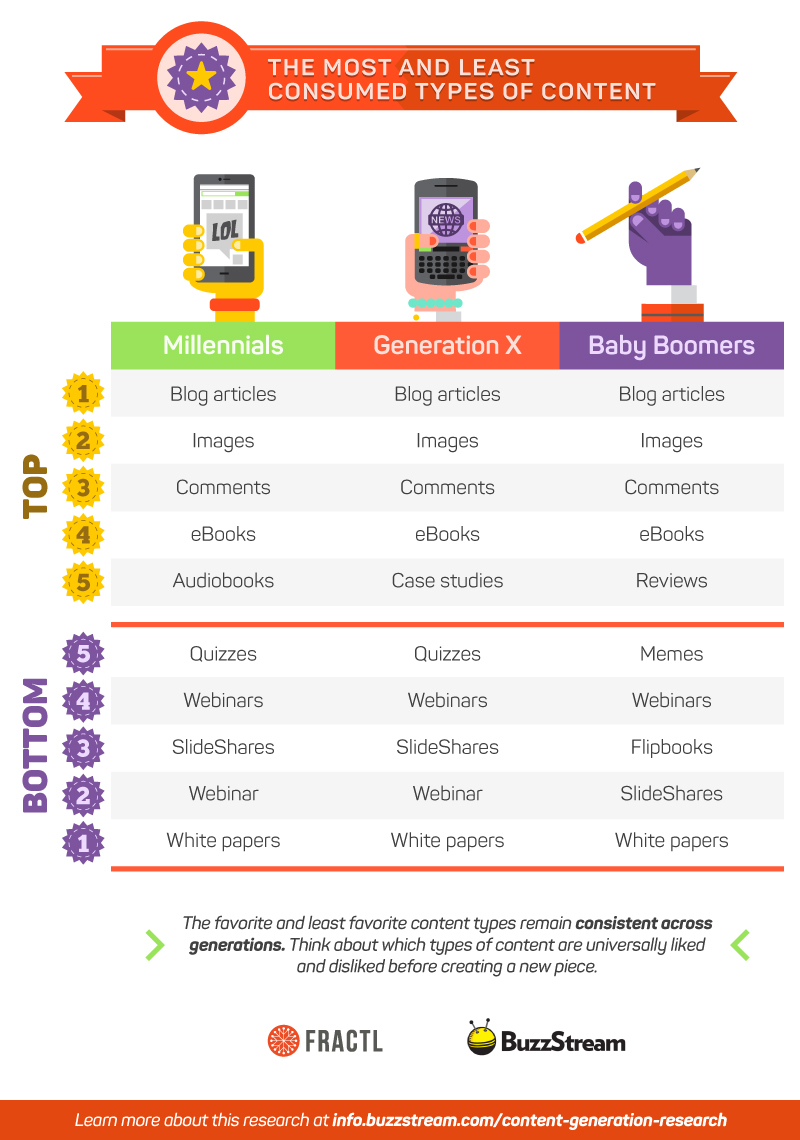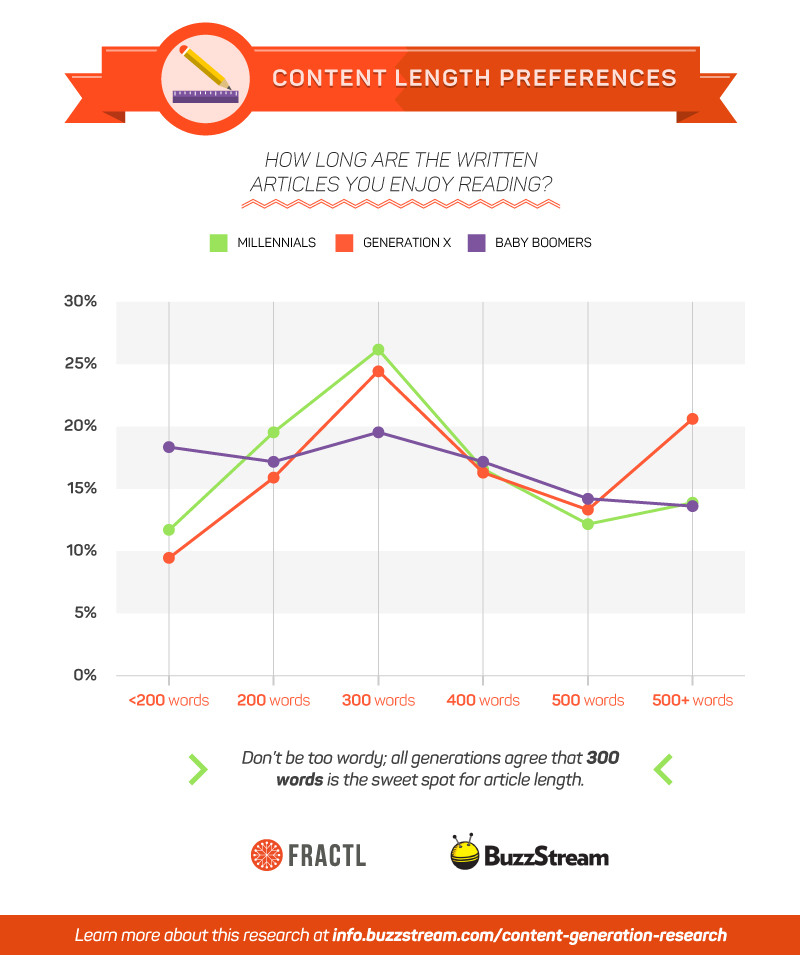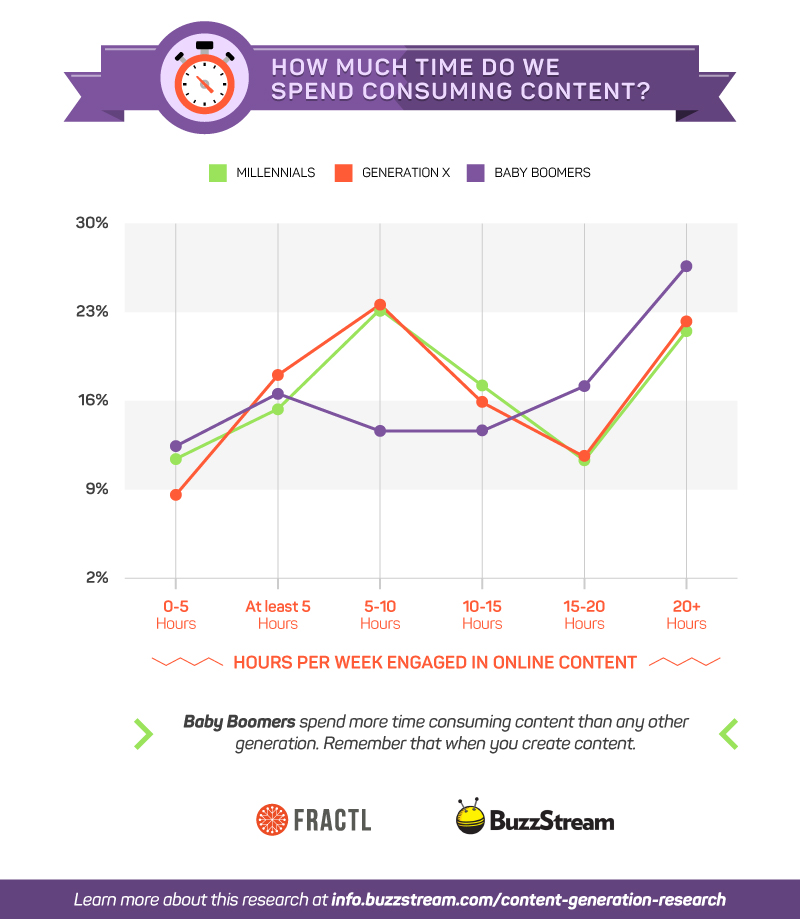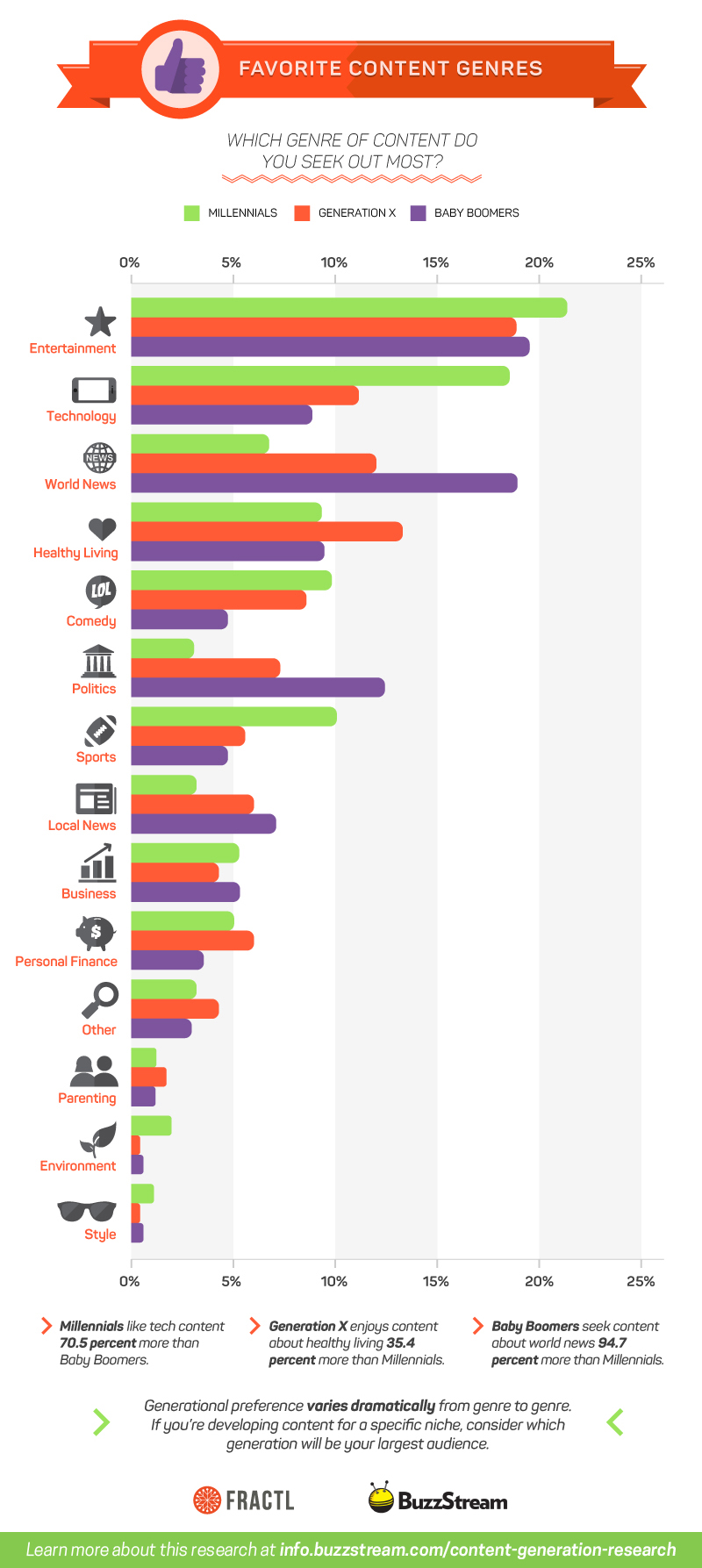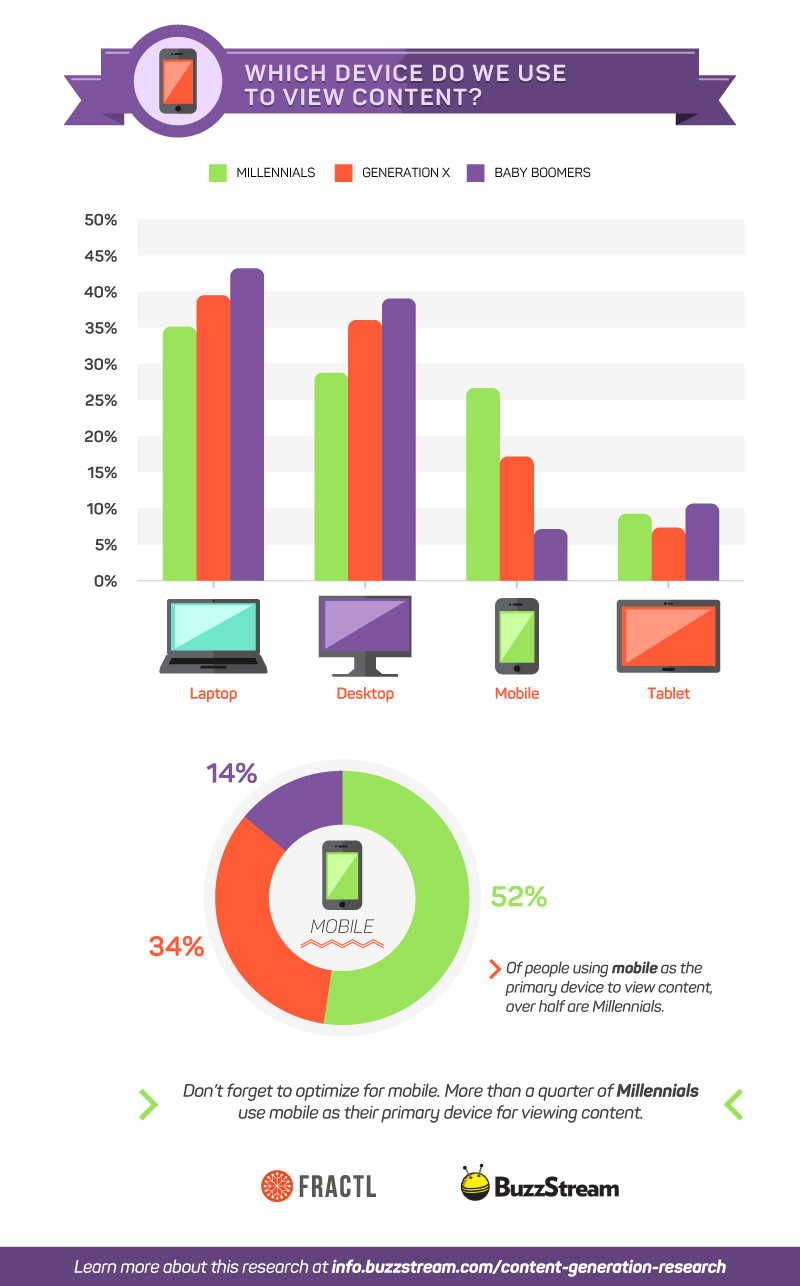If you’re hoping to reach a specific age group via native advertising, tailoring your campaign content to that generation’s unique preferences is essential.
We – at Fractl – recently completed a study with BuzzStream where we analyzed content consumption habits for three distinct generations: Millennials (born between 1977 and 1995), Generation Xers (born between 1965 and 1977), and Baby Boomers (born between 1946 and 1964). As part of the study, we surveyed more than 1.200 people and asked each age group about their content preferences and habits, including how much time they spend consuming online content, which content types and lengths they prefer, and which topics they find most engaging.
I’ve pulled out some of the study’s most interesting takeaways below. As you read, consider how these findings could help improve the efficacy of your native advertising campaigns.
1. Blog posts and shorter content appeal to all three generations
The generations agree on the content formats and lengths they enjoy most.
Blog articles are the most consumed content format by all three generations, followed by images, comments, and eBooks. The fifth most consumed content type varies for each, with Millennials preferring audiobooks, Generation Xers preferring case studies, and Boomers preferring reviews. Whitepapers, webinars, and SlideShares are among the least consumed content formats by each group.
When it comes to content length, shorter is better. All three age groups prefer online content around 300 words. But that doesn’t mean long-form content is out of the question. Of all three generations, Generation Xers are most likely to enjoy longer content – just over 20 percent reported a preference for content over 500 words.
2. Baby Boomers are consuming the most online content
If you assume the youngest generation spends the most time consuming content, you might be surprised to learn that over 25 percent of Boomers spend more than 20 hours a week consuming content online.
Other notable findings regarding time spent consuming content include the following:
- Less than 10 percent of Generation Xers spend no more than five hours online – the least of any generation.
- Just over 22 percent each of Generation Xers and Millennials consume content between five and 10 hours per week.
- Over 40 percent more Baby Boomers consume between 15 and 20 hours of content online than both of the younger generations.
- Thirty percent of all respondents reported they are most likely to consume content between 8 p.m. and midnight.
- Boomers are most likely to consume content in the morning, with nearly 40 percent reporting being online between 5 a.m. and noon.
3. Content topic preferences vary widely between generations
Perhaps the most telling differences between the generations are seen via their content topic preferences.
The study found that Millennials care the most about tech, Generation Xers are more likely to read about health topics, and Boomers want news and political content. Entertainment content is most popular among all three age groups, but it’s slightly more popular among Millennials and Generation X.
4. Millennials are most likely to view content on their mobile devices
35 percent or more of each age group use laptops as their primary devices. However, the biggest distinction comes from mobile device habits: More than 25 percent of Millennials use their smartphones as their primary device, and of anyone who shares this preference, more than 50 percent are Millennials.
Additional findings include the following:
- Millennials use their smartphones about 42 percent more than Generation Xers as a primary device.
- Baby Boomers make up 40 percent of all primary tablet users.
- Roughly 20 percent more Baby Boomers use their laptop compared to Millennials.
Key Takeaways
So what do all of these stats mean for native advertising? Consider applying the following insights to your campaigns to help increase impact and engagement among your target audience:
- Even if you don’t have a specific age group in mind for your campaign, consider which generation is most likely to see it based on the content topics they are most interested in.
- Mobile optimization is crucial for campaigns targeting Millennials since this group is most likely to use their smartphone as a primary device.
- Don’t overlook the potential benefits of publishing and promoting campaigns at night, when all generations are most likely to be consuming content.
Want to learn more about the online content preferences of different age groups? Be sure to download our full study for additional insights.

Kerry Jones is an experienced digital marketer with a background in content marketing, outreach, community management, and social media. She's currently the Inbound Marketing Manager at Fractl, where she creates content marketing campaigns featuring their proprietary research.
 By
By 